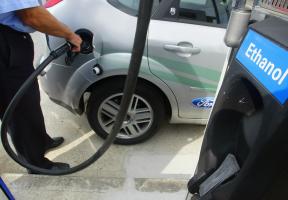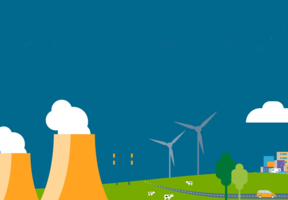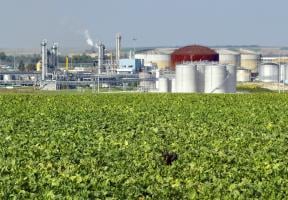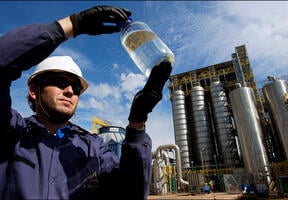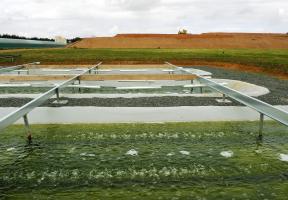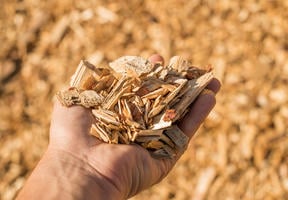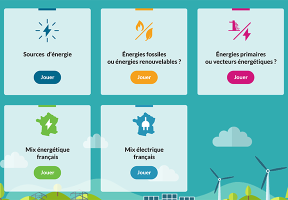Methanization in Europe
10 min read

Susanna Pflüger
The Rise of Anaerobic Digestion in Europe
production in Europe has soared over the last ten years. digestion is emerging in combination with other renewable energies as a way to achieve the European Union's targets. Here, Susanna Pflüger, Secretary General of the European Biogas Association (EBA), analyzes future prospects for the industry in collaboration with Gregory Reuland, Technical and Project Officer at the EBA.
To understand the importance of on-farm anaerobic digestion, we should first bear in mind some basic concepts.
- Biogas is a renewable natural gas made up of a mixture of compounds, predominantly methane and carbon dioxide (CO2). It is released by the natural process of bacterial , also known as anaerobic digestion, which breaks down animal or plant matter.
- Anaerobic digestion can be used to transform organic by-products such as manure, crop residues, sewage sludge and kitchen waste into a high value-added commodity, while also capturing the greenhouse gases that some of these by-products would otherwise release into the environment.
- The process also leaves behind an organo-mineral fraction known as , which can be used as an effective fertilizer in farming.
- Biogas and biomethane are not the same thing: the first is the unrefined mixture of gases obtained directly through the anaerobic digestion process, and the second is purified methane once the other gases (mainly CO2) have been removed.
Biogas can give farmers a greater degree of , since they can use a engine to produce for on-site use or for use on the farm or to sell to the public grid. The biodigestate also helps them rely less on petrochemical fertilizers.
Biomethane has the considerable advantage of being an that is easy to store and transport. When fed back into the gas grid, it effectively complements other forms of . Biomethane also contributes to reducing CO2 emissions from transportation, since it can be used directly in natural gas engines, as well as in manufacturing, where chemical companies for example rely on natural gas for their processes.
The Development of Biogas in Europe
There were 17,662 biogas facilities in Europe in 2016, compared with 6,227 in 2009. This spectacular growth, which has leveled off since 2017, is largely attributable to governmental support programs and European renewable energy targets. France is the world's fifth largest producer of biogas, and although it still lags far behind Germany in this respect, it has been gaining ground recently.
Practices vary from country to country1; in 2015, for example, more than 52% of the matter fed into digesters in Germany corresponded to energy crops and 43% to crop residues. This was significantly different from France, where crop residues and manure represented more than 67% and energy crops only 14%.
In Europe as a whole, biogas used in cogeneration (i.e., to produce heat and electricity) still accounts for the lion's share, generating more than 250 terawatt-hours of . Use of biomethane is still in its infancy, at 17 terawatt-hours, but is growing rapidly. Led by Germany, France and Sweden, use of biomethane across Europe grew by 40% in 2016.
The increase was particularly striking in France, with use of the resource soaring from three units in 2013 to 65 in 2018, representing a capacity of one terawatt-hour/year. Hundreds more projects are awaiting connection to the grid, with some sources estimating that they represent a potential eight terawatt-hours.
The European Union has set the target of raising the proportion of renewable energies in the overall mix to 32% and renewable fuels for transportation to 14% by 2030.
No single type of renewable energy will be able to reach these targets on its own but a combination of complementary renewables could be used to achieve the energy transition.
Many projects involving European industry players, universities and research centers are currently being considered to position anaerobic digestion as a key technology in circular economy systems alongside other processes and new technologies2. Methanization may prove to play a key role in achieving the European Union's targets.
Susanna Pflüger, born in Finland in 1984, graduated in European Studies from Ruhr University in Bochum, Germany. She joined the EBA in 2012 and has represented the organization at the European Union in Brussels. She became the EBA's Secretary General in 2016.
Sources:
- The EBA publishes a comprehensive report every year
-
In particular, European projects for processing digestate: Systemic, Nutri2Cycle and ALG-AD

Armelle Damiano
Agricultural Anaerobic Digestion: Asking the Right Questions
France has around 400 agricultural anaerobic digestion facilities, transforming animal waste and crop residues into biogas. The is processed in digesters, or bioreactors, which capture the gases released during fermentation. Here, engineer Armelle Damiano, who is working on implementing the biogas plan in western France, explains how to do it sustainably.
Turning otherwise wasted biomass into biogas on farms has a number of undeniable advantages. It gives farmers an additional source of long-term income, contributes to producing a renewable gas as part of the , and generates heat that can be used locally.
However, all the aspects of a biogas project should be carefully analyzed and controlled to ensure that it develops sustainably and does not disrupt the workings of the farm. Before installing a digester, farmers should ask themselves a few simple questions.
What Resources Are Available To Me?
On cattle, pig and poultry farms, biomass is readily available in the form of animal manure. Crop farmers can use plant residue or intermediate energy crops, which are planted to cover the soil in winter and do not compete with the primary crops. Run-of-the-mill plants are used for this purpose, such as forage cereal triticale, oats or simply grass.
By engaging in joint projects, farmers may also be able to pool resources with neighboring farms. Alternatively, resources may be available from the surrounding area, such as grass clippings from nearby gardens or roadsides.
and recovering biowaste such as food waste from cafeterias or hospital restaurants or household waste is more complicated because additional equipment is required to sanitize it and eliminate unwanted elements.
What Investments Do I Need?
Embarking on an anaerobic digestion project calls for skills, time, and financial resources.
The financial investment is less for small-scale anaerobic digestion or for covering pits to collect biogas. But average-sized digesters and the accompanying facilities can quickly add up to millions of euros. Financial aid and loans are available, but a certain proportion must be self-funded in line with the income the farm can generate, to avoid upsetting the economic balance of the operation as a whole.
That is why our non-profit does not solicit farmers directly; since anaerobic digestion projects require such a big personal commitment, the idea needs to come from the farmers themselves. We let them approach us for advice and support, which we provide.
How Long Will It Take To Set Up?
An ambitious biogas project demands very careful preparation, including training in new techniques and research into specific information.
Once the digester is operational, the farmer needs to set aside time each today to check its proper functioning, refill the pit or hopper, and carry out maintenance work.
However, these tasks can be shared as part of joint projects operated by several farmers. Joining forces in this way is very useful to help the project reach critical mass and generate good returns. In western France, for example, a farm of at least 100 cows is considered the minimum for an anaerobic digestion project.
How Will I Use The Gas?
There are several different ways.
For small facilities, the simplest method is to burn the gas in an on-site boiler and use it to reduce spending on heating and hot water. The more profitable solution is to sell it at prices sanctioned by public authorities.
The gas can be fed into the public grid if there is an entry point nearby. To do this, the gas that comes out of the digester needs to be purified, to take it from around 60% methane to an almost-pure 95%, and compressed.
Otherwise, it can be transformed into electricity using a cogeneration engine, producing electricity for the grid and heat for use on the farm or in a nearby area – to heat a greenhouse, building or factory, for example.
Anaerobic digestion features prominently in French public policy, although the country is still a long way from achieving the target, set in 2015 by the bill on the energy transition toward green growth, for 10% of gas consumed to be renewable by 2030.
Armelle Damiano, an engineer, is director of the non-profit organization AILE. AILE is implementing the biogas plan in western France, where the anaerobic digestion industry is the most developed. It receives support from regional institutions, the French Environment and Energy Management Agency (ADEME), and European funding programs.



